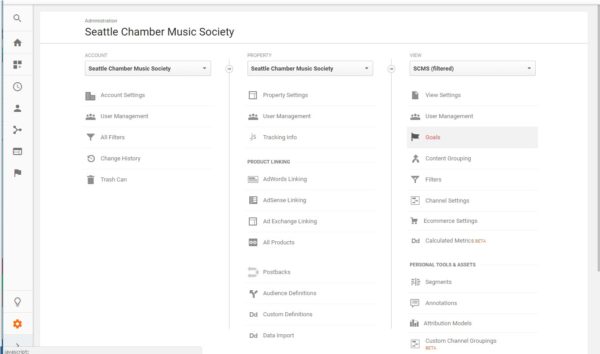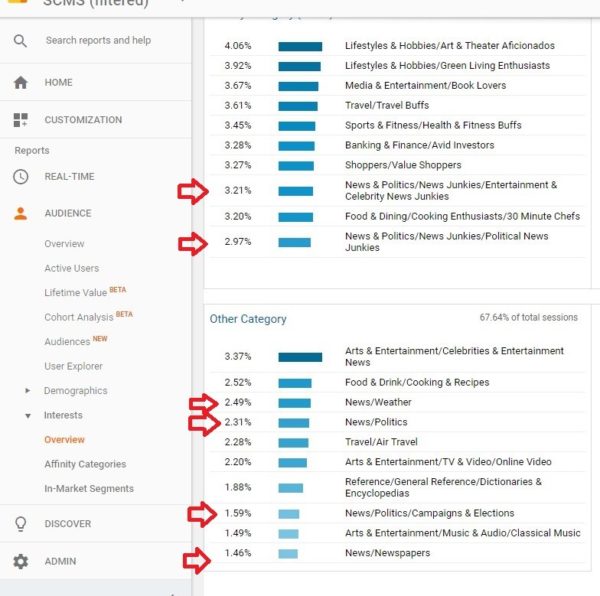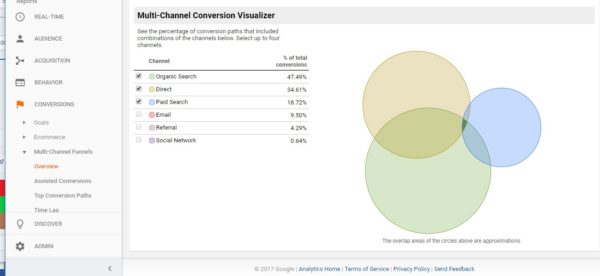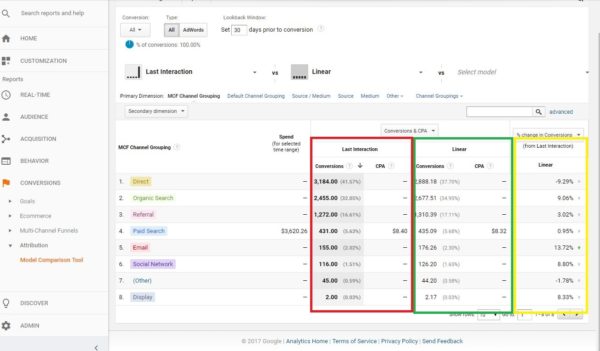How to set up (and use) your nonprofit’s Google Analytics account
Google Analytics; we all know we should be using it, but it can be a little scary to dive in. This video interview introduces the value of Google Analytics, and for this post, I dive a little deeper; looking at a few of the most powerful tools that I’ve found really useful in my work at the Seattle Chamber Music Society. I also offer some introductory ways you can start using more of those tabs on the side.
One great thing about Google Analytics (GA) is that you have a powerful measuring tool at your disposal, absolutely free. With so much power you just need to know how to harness some of it to really get the most out of your usage. I’ll walk through a few basics to make sure you keep clean data, build out a test site so you can play around with different tracking functions and not lose your data, and offer up a few tips to help assess your websites effectiveness and ways to measure success.
How to set up Google Analytics for your nonprofit organization #NPMC #nptech Share on XGetting started: set up your accounts
There is a lot of data in GA, where should one even start?
I like to make several different accounts for my organization. I always create one that has all the data and all the information flowing into it and leave that one alone as an “unfiltered” report. I’ll explain why in just a minute.
Next, I make a second account that is “filtered.” Here I make sure to block all of the staff IP addresses so that you can really see the number of visitors to your site. When you log-on 10x/day and dive deep into the recesses of your website, those pages are tracking your movement. If you want an accurate view of how people are using your site, you want to filter out the people that are working on it. You want to keep that “unfiltered” report, though, because you do want access to all of your data; if you delete it at some point, you’ll only be able to start tracking from that point forward.

The third account I recommend making is a “test” account. This way you don’t muck up your data by trying a new goal that deletes your previous info. Here is where you can try out more complex goal flow and find out how it impacts your GA data before overwriting everything else.
For those about to rock: creating goals
Alright, you’ve got your different accounts all set-up, so now you’re ready to rock ‘n roll with GA! It will vary with your particular organization; my concern is selling tickets, so one of my goals is to see people hitting my “thank you” page after a purchase. Maybe you want people to dive deep onto your site and spend a certain amount of time looking at content, or visit more than a certain number of pages on a visit. From the ADMIN tool you can create these, and countless other goals, that will be useful for your organization.
From ADMIN – under “View” – you’ll find the goals. You can have up to 20 at any time, so think about which ones matter most to you and your organization. Even though I’m a marketer, I set-up goals that can be valuable for our fundraisers and program coordinators, too.

When you create a new goal in GA, it gives you a list from their most used templates, so you can start with some simpler goals and really work towards building more complex goals as you get more and more comfortable with GA.
Related to your goals is the “custom alerts;” here you can set up notifications so that if something is tracking abnormally high, or low, you can dig into it. Maybe your site got hacked, or you’ve got a broken link. You can find out quickly so that you can detect and fix the problem and keep your site up and running. Again, it gives you a nice easy template to try playing around with to find out the right alerts for your organization.
Using the data
You’re starting to feel like a rockstar: you’ve got some goals set up and you see that data funneling in, you see people are using the site the way you want them to, you’re finding out when pages are down so you can get them up and running. Feels good, doesn’t it?
Now is when you can start to use that data to make changes to individual pages, or your whole site.
Start by looking at your AUDIENCE, ACQUISITION, BEHAVIOR, and CONVERSIONS. Your audience will tell you more about people visiting your site. We learned that our visitors are “news-junkies” that are using their mobile phones to visit our site and are spending more time per visit compared to the previous year. With these analytics in mind, we spent more of our advertising dollars on local news websites and worked with our web designer to have a mobile adaptive website.

Assess your website’s success
We can dive deeper into each of the channels, but one that has been the most effective for my organization is the CONVERSIONS tab. Those goals that you set-up earlier are all tracked here, so you can start to see how successful your site really is. Remember that you can look at all of them, or break them out by goal. This is important because you can start to see patterns of behavior of people that complete goals on your websites. By selecting one goal at a time, you can really tell the behavior patterns of the individuals that were on your site.
With tools like “goal flow” you can see the different channels that bring people to your pages, and then completing the goals you setup. Are they coming directly, is it your AdWords (which is a whole other topic!), an email you sent out, or one of your paid advertisements?
Two tabs that I have found particularly helpful to show how traffic has come to our site, and led to conversions, is the “Multi-Channel Funnels” tab and the “Attribution” tab.

With the funnels, you can see how each of your channels interact with each other; your marketing mix and the number of impressions you need for someone to take action. The Multi-Channel Funnels give you a clear Venn diagram of how your different channels interact and lead to your conversion goals. That’s why it is so important to set those goals up right at the beginning. If you don’t have the right goal, you’re measuring the wrong thing here.
This goes even deeper with the Model Comparison Tool under Attribution. It helps you see the true value of each of your marketing channels. It defaults to “last interaction,” which tells you the last step in your path. Think about your last big purchase: what influenced you to spend that money? It might have felt like an impulse buy, but maybe you saw an ad for it, or got an email about a product telling you why you had to have it.

And that’s where this report is so helpful! I like to use “last interaction” as a measuring stick, but prefer to use the “linear” view to see the real value of the way my marketing efforts interact with a patron. I see that people coming to my website directly is the biggest reason people buy tickets to a concert, but most people don’t out-of-the-blue decide to buy tickets. That’s where I see that those referrals and e-newsletter and social-media storytelling posts pay off. They may not be the final factor of why people buy a ticket, but it starts the conversation for our patrons. You may see radically different paths for your own organization, but it is a good reminder about the importance of each and every channel that you communicate with your supporters.
Tip of the Google Analytics iceberg
With so many tools in GA, I’ve barely scratched the surface. Once you feel comfortable with the data basics, you can start to look at individual ads or campaigns that you run to continually refine and reformulate. As marketers our job is never done. You met your goal – great! Can you do it more efficiently? How does your supporters’ behavior continue to change and evolve? How are you going to make sure that you stay relevant to them, and reach new audiences?
So don’t let GA sit on the shelf collecting dust. There’s no better time to dive in and build out those multiple accounts, set up a few goals, and start to analyze how your patrons use your website!
How to set up (and use) your nonprofit’s Google Analytics account #NPMC #nptech Share on X


 PRINT
PRINT
